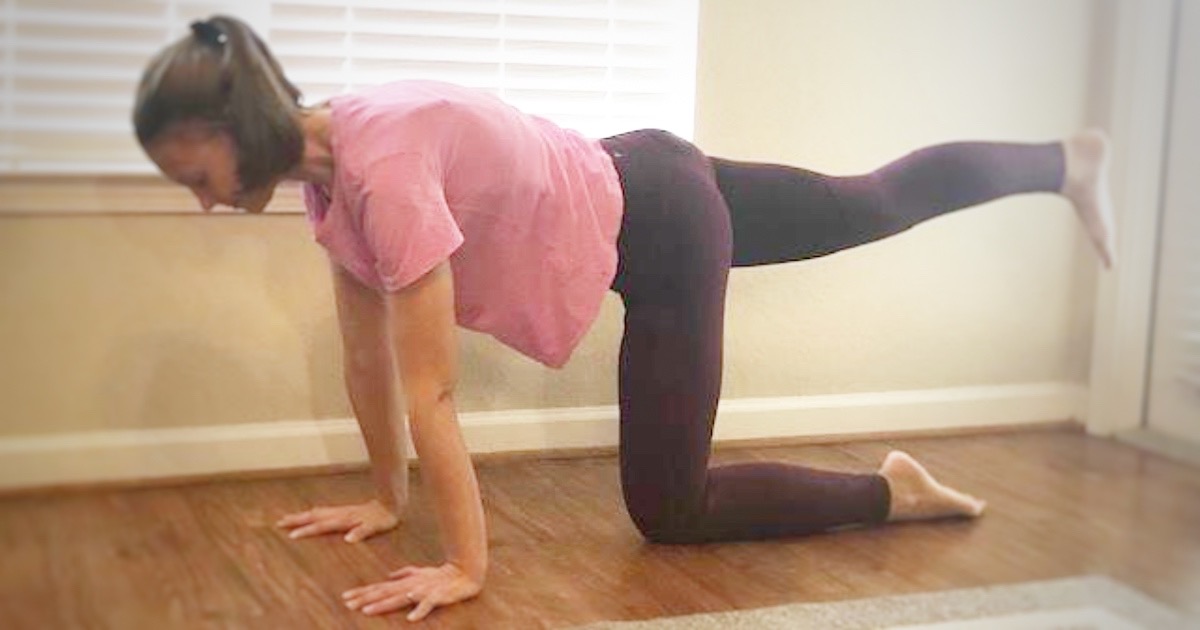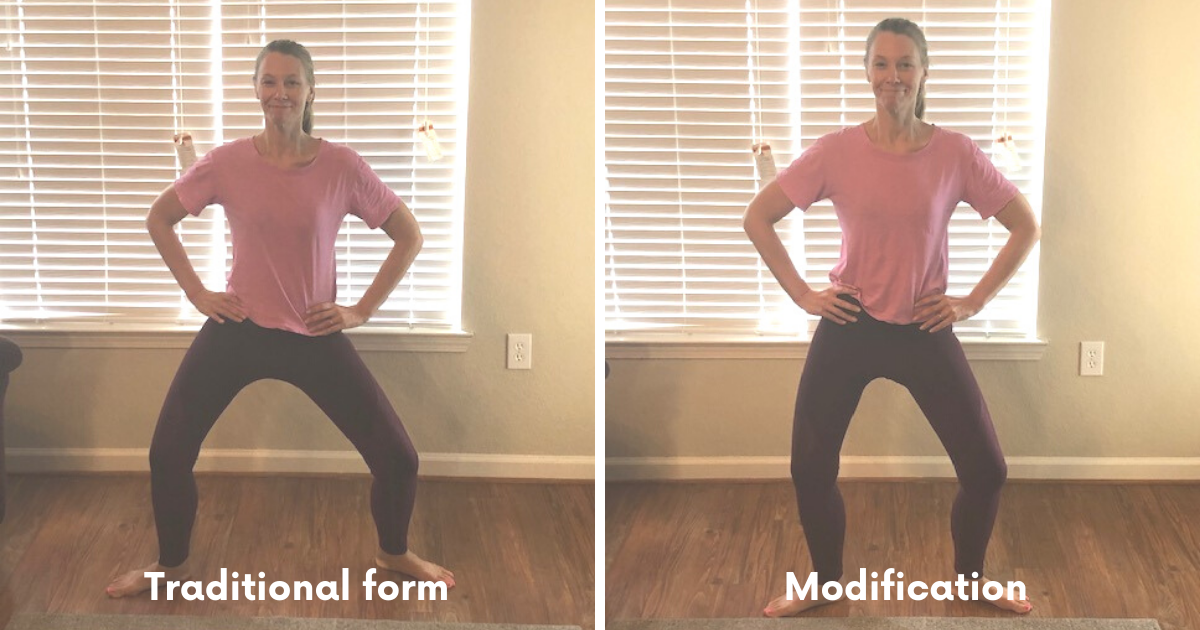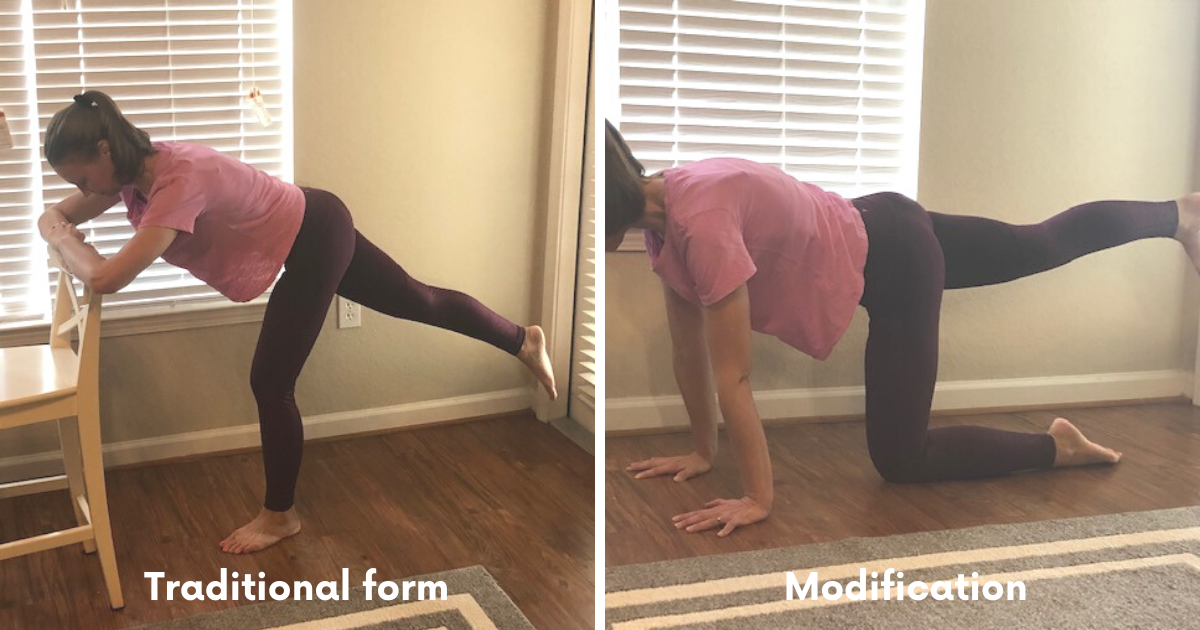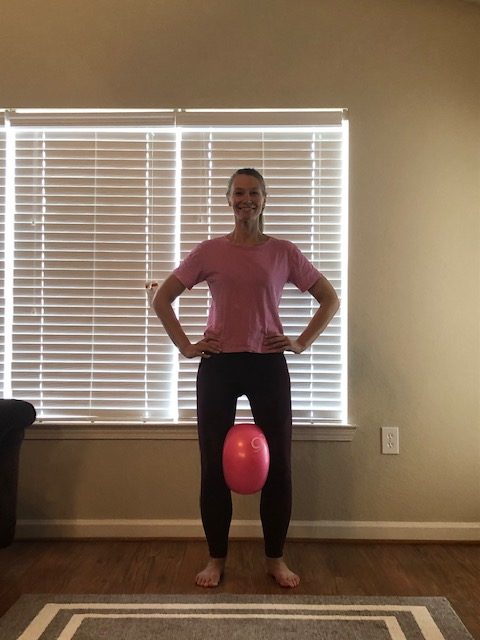
Barre promotes better posture and delivers on its promise to strengthen and tone, but the emphasis on proper form, holding poses for what can often feel like an excruciatingly long period of time, and building muscle fatigue can make getting the most out of a class difficult for people with joint replacements. Looking in the mirror and seeing that your form is just not quite right can also be a turn-off for individuals with joint restrictions.
Instructors promote barre as a low-impact alternative to more cardio-heavy fitness classes, making the tucking and signature shaking during extended holds ideal for joints that can’t handle traditional high-impact programs like HIIT. Correct as these claims are, introducing modifications for those with joint replacements (or really any structural limits on motion and flexibility) makes for a better experience.
And I should know. In 2015, I had a total right hip replacement which left me with a limited range of motion. As so often happens with these surgeries, my right leg is also about half an inch shorter than my left, adding some additional challenges to any physical activity. I started attending barre classes in Cleveland in 2017 while following my physician’s advice to seek out low-impact workouts that would put less stress on my joints.
During my first sessions, however, I was discouraged by my wacky form and off-balance attempts to get into signature positions. I nearly threw in the towel and decided that barre just wouldn’t work for me. Fortunately, with the help of some instructors, I learned modifications that allowed me to get the most out of my workouts while also protecting my joints. I recently completed my barre instructor training and prioritize making barre accessible for everyone, including people like me!
Below are some examples of modifications for taking barre with joint replacements or restrictions:
1) Wide Second position
Let’s face it: My wide second position is not very wide. As you can see in the picture below, my right knee cannot rotate back because of my replacement and limited range of motion. This prevents me from a) getting low in wide second and b) achieving the correct form where my right knee moves over my second toe. People with knee replacements might also have this problem.

A modification is simply to not get so deep into the position. I learned that I have to go about 70% of the way down and to shorten my stance a bit. This allows me to get some of that outward rotation with my right hip without forcing the position. My form is not perfect, but what matters in this position (and any others in barre) is that you are still working the targeted muscles, in this case, the inner thighs and glutes for plies. Even though I am not as wide or low, I can still feel the stretch and lengthening in my thighs, letting me know that the pose is working.
For those with knee replacements, modifications are similar for many poses like wide second. Practice focusing on the moves without going as deep. You can still get the same effect by doing shallow plies or pulses.
2) Parallel and First Positions
I don’t have as many issues with parallel and first positions with a hip replacement, but these can be especially challenging if you have a knee replacement. Apart from accepting that you won’t be able to go as low as others in the class, placing a ball between your knees will help to stabilize your joints. You’ll also be getting an extra boost in this position because you will be using your inner thighs to hold onto the ball while getting the quad work with smaller plies, pulses, and holds. With a joint replacement or knee issues, you get a double-duty workout!
3) Standing Barre Moves and Mat Work
Here’s a good modification to have in your back pocket if you have a replacement or joint restriction yourself or if you’re an instructor: 95% of positions that can be done at the barre can also be done on the mat and vice versa. I often find it challenging to do standing poses at the barre like the standard leg lift below.
For many people who have joint replacements (even with extended physical therapy), overcompensating with the non-replacement joint means that side tends to get fatigued earlier than the other. This translates into me not being able to hold proper form, leading to lower back pain (always something to avoid no matter what pose) and the feeling that I’m not getting my working leg high enough for a solid workout.

An easy modification is to simply move to the mat and perform the same movement on all fours. You’ll be working the targeted muscle group but will be able to focus more on feeling the micro-movements in the glutes or thighs rather than focusing on how high you can get your leg. You can further modify by moving to your forearms.
This modification in many ways is a mental change in your approach to barre. You have to convince yourself that it’s okay to move down to the ground and look different from everyone else and that you are getting the same benefits from the poses.
The same goes for people with knee replacements. Doing mat work while kneeling can be torture. If that is the case, you can move up to the barre and maybe add a slight bend in the non-working leg.
There are many modifications that you can do to ensure that you or your clients have a good experience in class or at home. And if you have a joint replacement, you have an extra advantage in that focusing on the muscles and movements no matter how low or wide you can get helps to build a mental connection that leads to a more effective workout!
No matter what, learn the difference between the discomfort that is part of pushing yourself to achieve your working zone in a pose from sharp pain that indicates the need to modify your movements. This is key to getting the best workout and reaping all of the benefits of barre!
About the Author
Steph Hinnershitz completed her barre training in 2020 through Cleveland’s Barre Fly studio. She is also a published historian and an education consultant and lives with her husband in Montgomery, Alabama.





